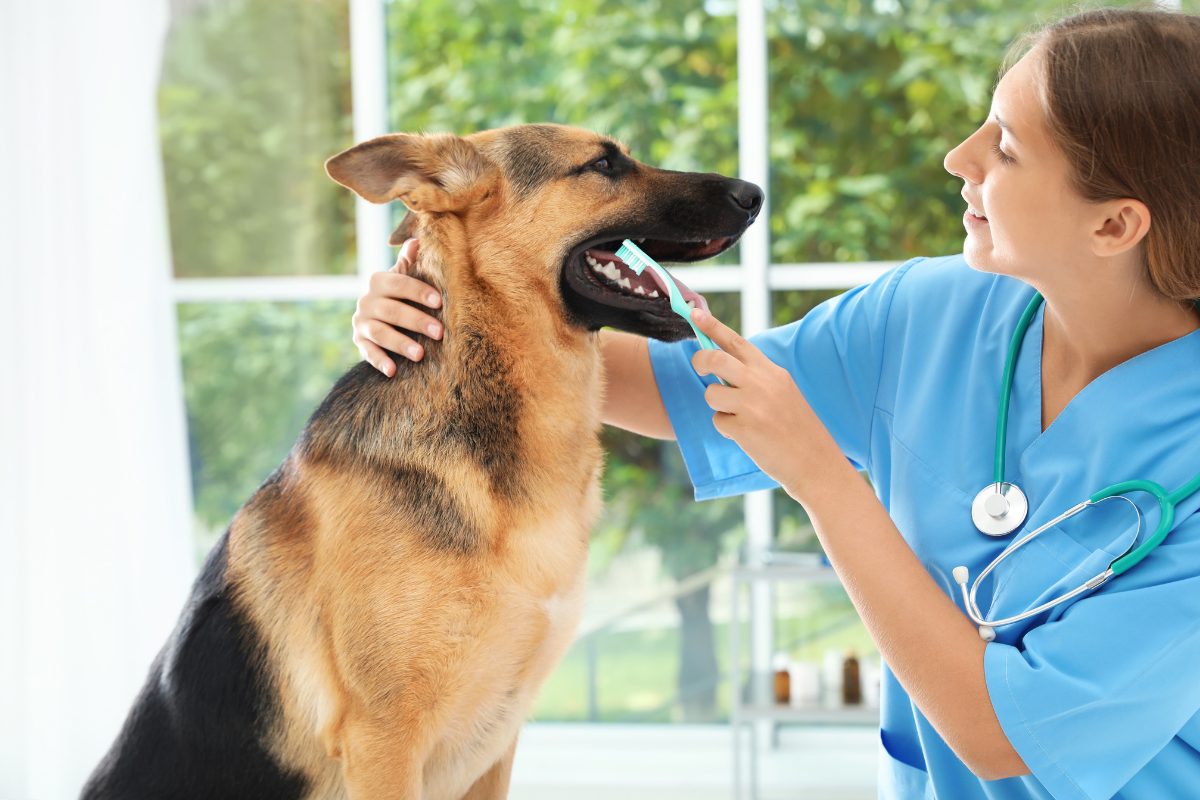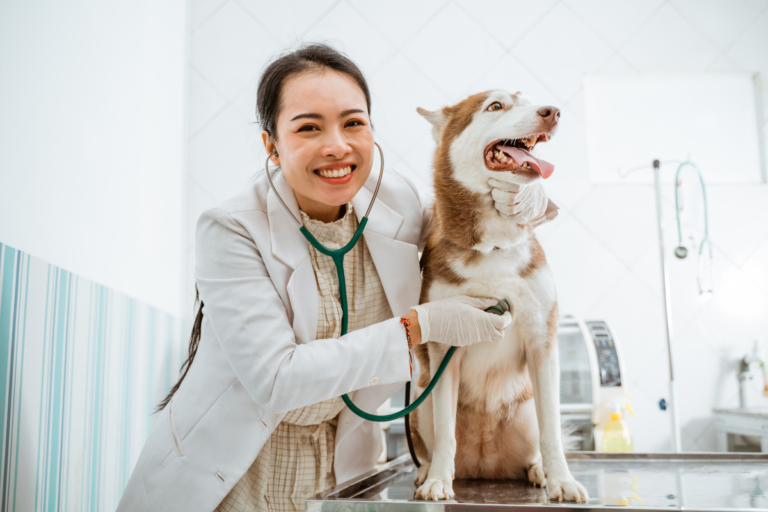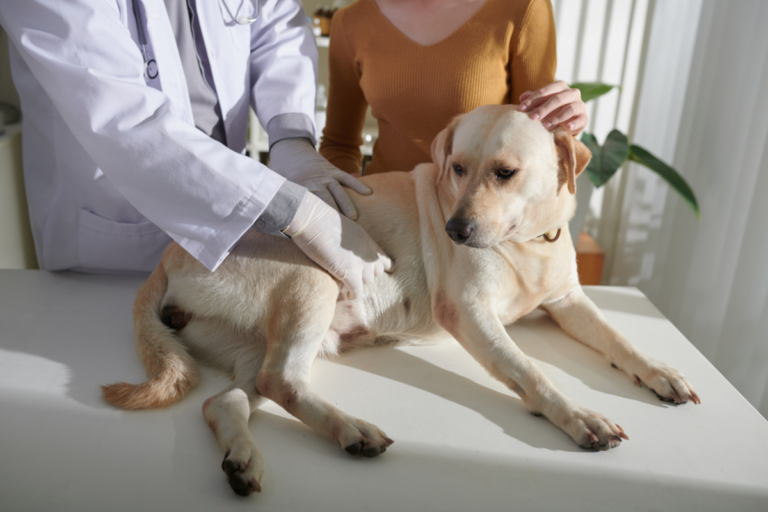Protecting Our Pups: The Art of Caring for Dogs Teeth
Understanding Dog Dental Development
Getting a grip on our dogs’ dental journey is the first step to keeping those wagging tails and sloppy kisses coming. You see, puppy teeth and adult teeth? Whole different ballgame.
Teething in Puppies
Puppies, adorable as they are, start life with gums as bare as a blank slate. It’s not until around three weeks that tiny teeth start peeking through like shy kids at a party. And if you blink, by six to eight weeks, your puppy is flashing a full set of 28 needle-sharp baby teeth perilously ready to explore every corner that’s off-limits.
| Age (Weeks) | Number of Teeth |
|---|---|
| 3 | 5-10 |
| 6-8 | 28 |
Right around the time they can frustrate you with their nibbles, offer up some sympathy cookies because, by three-and-a-half months, they’ll start losing those baby teeth. It’s the great dental swap—by six months, our furry little Frankenstein’s have 42 adult teeth locking into position.
For more tips on dealing with teething puppies and ensuring their comfort, consider reading about dental disease in dogs.
| Age (Months) | Dental Development |
|---|---|
| 3.5 | Start losing baby teeth |
| 6 | 42 adult teeth present |
Adult Dog Teeth
Adult dog mouths are like the Fort Knox of teeth: 42 strong with 20 on the top and 22 on the bottom. It’s the lineup every vet respects: incisors for the fine job, canines, and let’s not forget about premolars and molars that handle the heavy lifting. They’re like a toolbox crafted for everything from steak to squeaky toys.
| Dental Category | Upper Jaw | Lower Jaw | Total |
|---|---|---|---|
| Incisors | 6 | 6 | 12 |
| Canines | 2 | 2 | 4 |
| Premolars | 8 | 8 | 16 |
| Molars | 4 | 6 | 10 |
Peeking into our dogs’ dental timeline isn’t just about keeping them from chewing your shoes—though that’s a bonus. It’s a heads-up that lets us hit the brakes on any problems before they parade. For a little extra peace of mind and that professional edge on keeping those chompers sparkling, swing by our canine dental guide for expert advice.
Common Dental Issues in Dogs
Dental woes are something our dogs shouldn’t have to deal with, yet they do. Knowing what to watch out for means we can step up and give them the proper care. Let’s chat about why those pearly whites might jump ship and some usual suspects when it comes to doggy tooth troubles.
Causes of Tooth Loss
Here’s the deal: No, your adult dog shouldn’t be losing teeth left and right. Usual tooth shedding ends after the puppy stage. (PetMD). Here’s why they might lose them anyway:
| Cause | What’s Happening? |
|---|---|
| Periodontal Disease | It’s the bad guy behind most tooth losses. The buildup of plaque leads to gum hell which can slowly morph into periodontitis—basically, wobbly and escapee teeth. |
| Trauma | Yep, the chomping monster might bite down on something too hard, causing casualties. |
| Tooth Decay | With constant use, teeth wear down, especially in little dogs and Greyhounds. Bummer, right? (PetMD) |
| Advanced Age | Getting on in years means some extra upkeep—or suffered consequences. |
If Rover seems to be having munching issues, has wiggly teeth, or could knock us out with his breath, it’s time for a vet visit ASAP (Sango Veterinary Hospital).
Dental Diseases
Dog flicks like “Jaws,” but not in a good way. Ignored dental issues can lead to big drama! Here are some just as fun-loving names of diseases that pick fights in Rover’s mouth:
| Disease | Symptoms | Treatment |
|---|---|---|
| Gingivitis | The gums go red and puffy, and the breath, oh boy! | Breakout the toothbrush or head in for a professional cleanup. |
| Periodontitis | Pup’s not keen on dinner, teeth loosen, gums can bleed | Might need a heavy-duty clean or even yanking out the tooth. |
| Tooth Root Abscess | Swelling, ouchie jaw, pus that’s yucky | Antibiotics or, in more dramatic cases, dental surgery! |
| Fractured Teeth | Clearly visible splits, munching is no longer fun | Some repair work or removal may be in order. |
Routine vet visits are a lifesaver! Starting dental care at home can make a big difference. Break out those doggie toothbrushes and check out those chew toys that promise happy gums and clean teeth.
By knowing what’s what with these dental issues, we can tackle them head-on and keep Mr. Fluffy healthy and tail-wagging happy. Dental TLC doesn’t just keep their mouth in great shape but helps dodge other health nightmares connected to neglected chompers (periodontal disease in dogs).
Signs of Dental Problems
Finding and fixing dental issues in our pets is as essential as a morning coffee. We all want them to be happy and healthy, right? Let’s see how we can spot common tooth troubles and tell-tale signs of gum disease in our furry gang.
Recognizing Dental Disease
Periodontal disease is the heavyweight champ of dog dental problems. Kicks in as early as age 3, the AVMA tells us. If not nipped in the bud, it can rain on the parade with bigger issues—like kidney, liver, and heart wreckage. Here’s the lowdown on what to check for:
- Bad Breath: If it smells like they’ve been dumpster diving, take note.
- Tartar and Plaque Buildup: Those yellow or brown clingers on teeth need attention.
- Drooling: More drool than usual? That’s a red flag.
- Difficulty Eating: If crunching kibble seems like rocket science.
- Pawing at the Mouth: If Fluffy’s pawing their mouth, discomfort’s in town.
- Swollen Gums: Redness or puffiness that says “Help wanted!”
Raising our antennas early saves heartache—and a dentist-sized dent in our wallet!
| Sign | Description |
|---|---|
| Bad Breath | Stubborn stinky smell |
| Tartar and Plaque Buildup | Yellow or brown teeth offenders |
| Drooling | Unexpected saliva showers |
| Difficulty Eating | Ignoring the kibble or playing food catch |
| Pawing at Mouth | Means ouch in doggy language |
| Swollen Gums | Crimson or plump gums |
Symptoms of Gum Disease
Gingivitis ain’t just a challenge to spell, it’s a sneaky beast lurking around the gums, waiting to turn fierce. Here’s how it shows up:
- Red or Bleeding Gums: Brushing? Chewing? Watch for red flags.
- Receding Gums: If gums are packing their bags.
- Loose Teeth: Wigglier than a loose doorknob.
- Mouth Sensitivity: Hands-off alert if you touch near the snout.
- Changes in Behavior: Attitude of “don’t touch my mouth!”
- Pus around Gums: Where pus makes its home, danger lurks.
Spotting these signs quickly can ward off nasties like bacteremia—the creepy sidekick that sneaks bacteria into the bloodstream and stirs up trouble everywhere (PetMD).
Snooze through the deets in our scoop on dog gum disease.
Being dental detectives keeps our fur buddies in top form. Keeping up with vet visits and brushing off pesky plaque with dental chews or treats helps keep their gnashers sparkling. Peek into our tips on dental chews and treats.
Good dental habits are MVPs for dodging messes like kidney disease, liver scares, and heart hiccups. Regular pro cleanings (yes, that means anesthesia) are spot-on for taking down dental dragons (AVMA).
Check out more on why keeping our pooch’s mouth minty fresh matters in the importance of canine oral health section.
Preventative Dental Care Measures
Let’s keep our furry pals’ chompers healthy and glowing! Dogs deserve a sparkling smile, and with a bit of dedication, we can ace this. We’ll dive into some game-changing tricks, like giving those teeth a good brush and pampering them with tasty dental chews.
Toothbrushing for Dogs
Believe it or not, brushing a doggo’s teeth isn’t just a fun bonding activity; it’s super important to dodge pesky dental problems. We all know that using the right gear makes all the difference: finger brushes for the tiny tots, or maybe gauze pads if you’re old school. A toothbrush that’s tailored for man’s best friend is spot on too (American Kennel Club). And, remember, human toothpaste is a no-go for them. Grab a dog-friendly paste – think chicken or peanut butter flavor. Yum!
| Item | Frequency | Notes |
|---|---|---|
| Finger Brush / Gauze Pad | Daily | Great for puppies and smaller furballs |
| Canine Toothbrush | Daily | Perfect for the big guys with grand mouths |
| Dog-Specific Toothpaste | Every brushing | Pick flavors that make tails wag |
Being consistent with brushing isn’t just good; it’s golden when dodging the bullet of periodontal issues. If you can, shoot for a daily routine to keep those teeth in tip-top shape.
Dental Chews and Treats
Beyond brushing, treating your buddy with dental goodies is a mouth saver. These chewables are simply fabulous for busting plaque and tartar on your dog’s teeth. Look out for products rocking that Veterinary Oral Health Council stamp of approval, meaning they’re legit and vet-backed (American Kennel Club).
| Product | Benefits | Notes |
|---|---|---|
| Dental Chews | Busts plaque, freshens breath | VOHC-approved ones are worth a look |
| Dental Treats | Tasty reward with cleanup action | Perfect pick for your dog’s size and taste |
| Chew Toys | Plaque removal in a play style | Tough toys are a must-have for safe gnawing |
Adding a dash of these chews or treats into the routine is like a cherry on top for your dog’s tooth kit. They’re a nifty fill-in between brushes. And hey, a quick vet chat and regular pro cleanups aren’t a bad idea to keep those teeth as bright as a summer day. For even more pawsome insights, peep our piece on dental disease in dogs.
By keeping up with these hassle-free tips, our pooches can show off their pearly whites for years to come. Explore more on dog gum disease and canine dental for a deeper dive into doggy dental care.
Professional Dental Care for Dogs
Keeping those puppy smiles bright often means calling in the pros. Taking care of your dog’s teeth doesn’t just prevent ouchies—it keeps them wagging and happy all over.
Veterinary Cleanings
Head’s up, folks: those yearly check-ups aren’t just for shots and belly rubs! When it comes to our canine companions, dental cleanings from the vet are a must-do. Vets go deep, scrubbing off muck even when we can’t see it. It’s like spring cleaning, but for chompers.
Here’s how the vets roll:
- Scaling: Out with the gunk! This is where plaque and tartar get the boot from teeth and gum.
- Polishing: Think spit shine, but without the spit—smooth teeth mean less gunk sticks around.
- Radiographs: Fancy term for X-rays. These bad boys peek at roots and bones.
Staying ahead of dental gremlins like gingivitis is key. And between the comfy couch cuddles, have a yak with your vet about what keeps those teeth in tip-top shape at home. Cruise over to how to battle doggy gum blues for the scoop.
Anesthesia and Dental Procedures
Ever try brushing your dog’s teeth when they have a serious case of the wiggles? Not fun, right? Anesthesia solves this, making dental check-ups smoother for everyone. When it comes to ensuring our four-legged buddies are chill and comfy, it’s the name of the game, right down to the root (pun intended). The American Veterinary Medical Association (AVMA) gives it a thumbs-up, with safety now at a high score.
There’s the quick take:
| What’s Up | Why It Rocks |
|---|---|
| Chill Factor | Your pooch stays cool and comfy. |
| Safety First | No wiggles mean they get a sparkle-worthy clean. |
| Thorough Check | Hidden tooth nasties? Not on our watch! |
Now, you might hear whispers of anesthesia-free cleanings, but the American Veterinary Dental College ain’t a fan. That’s like brushing teeth with your eyes closed—stuff gets missed.
In between vet visits, daily brushie sessions are your new BFF. And if you’re on the hunt for more tips and tricks, swing by our doggo dental tips for some awesome home hacks.
Remember, the doggie dentist is just one piece of the puzzle. Catching issues early means more tail-wagging fun for everyone! Juggling the vet’s expertise with at-home dental TLC is how we keep those smiles going strong.
To brush up on why healthy chompers matter across the doggo board, check out the nitty-gritty on why canine oral health reigns.
Importance of Canine Oral Health
Systemic Effects of Dental Disease
Giving our dogs a bright, healthy smile is about more than freshening up their kissers—it’s key to their overall health. Did you know that over 80% of dogs start showing signs of dental trouble by the ripe old age of three? Crazy, right? When dental problems hit, they have a sneaky way of reaching out from the mouth to mess with the whole body. Dodgy bacteria can sneak through sore gums and make their way to the bloodstream, possibly sticking their nose into important matters like the heart, kidneys, and liver.
| Organ Affected | Potential Impact |
|---|---|
| Heart | Endocarditis (Nasty heart infection) |
| Kidneys | Nephritis (Kidney inflammation party) |
| Liver | Hepatitis (Liver inflammation shindig) |
Knowing these systemic effects is like having a heads-up to take oral care seriously if we want to dodge bigger, nastier health storms. If you’re curious how dental health ties into organs, peek at our insights on dog heart disease and other jaw-droppers in deadly dog diseases.
Early Intervention & Regular Check-ups
Let’s talk about jumping on dental issues before they have a chance to rear their ugly heads! Like clockwork, many dogs find themselves with periodontal wrestles by age three. Regular check-ups let us catch small problems before they blow up into something major, like scary gum disease.
Snagging the toothbrush early, alongside giving them dental chews and treats that kick plaque and tartar to the curb, does wonders. Pairing this with regular date nights at the vet for cleanings like scaling and polishing keeps everything in tip-top shape. Vets often use anesthesia for these to keep stress and wiggling to a minimum, ensuring a spotless result.
| Dental Care Activity | Frequency |
|---|---|
| Brushing Teeth | Daily |
| Veterinary Cleanings | Annually |
| Dental Check-ups | Every 6 months |
Sticking to these dental care checkpoints helps sidestep a slew of dental diseases and keeps our pups wagging happy and healthy. Not only that, shoring up early intervention means catching health baddies like potential heart or sugar-level issues (dog heart failure or dog diabetes symptoms) rooting from oral neglect.
Committing to the groove of dental routines seriously lifts our dogs’ quality of life. Don’t forget to explore our thorough guides on health mutts and other care strategies that we vouch for!






